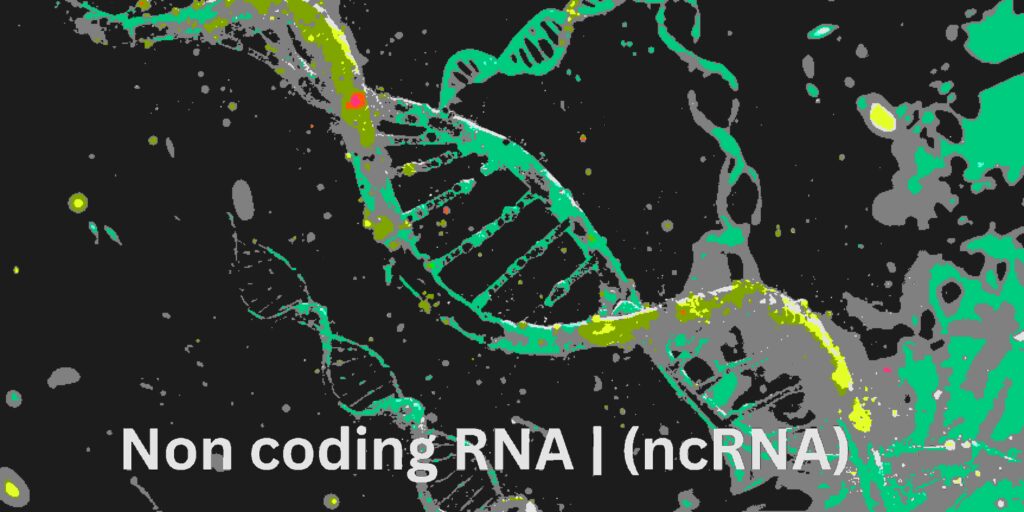Although RNA that does not translate into protein is often referred to as non-coding RNA (ncRNA), this does not suggest that such RNAs are functionless or lacking of information. Though it has long been thought that proteins carry out the common of genetic information transfer, new research designates that most genomes of mammals and other complex organisms are really transcribed into non-coding RNAs (ncRNAs), many of which undergo alternative splicing and/or processing to produce smaller products. Small nuclear RNAs (snRNAs) are engaged in splicing, small nucleolar RNAs (snoRNAs) are involved in the modification of rRNAs, and rRNAs and tRNAs are involved in mRNA translation.
Until newly, the common of known non-coding RNAs (ncRNAs) made very generic activities in cells. The important idea of molecular biology, which emerged since the study of basic organisms such as Escherichia coli, is that RNA mainly serves as an informational bridge linking a DNA sequence, or “gene,” to the protein that is encoded by it. It has been expected that the mainstream of genetic information defining biological shape and phenotype establishes as proteins, which perform a variety of structural and catalytic roles in addition to supervisory the system’s activity in different ways. This is assumed to be true for prokaryotes as well (Mattick & Makunin, 2006).
Similar to mRNAs, maximum non-coding RNAs (ncRNAs) have differential levels of expression in several cells and tissues. This proposes that ncRNAs and mRNAs are equally controlled, and that ncRNAs might be involved in physiologic or developmental mechanisms in vivo. According to Birney et al. (2007), 93% of the human genome is expressed in a diversity of human cells and tissues; yet, only 15% of the genome is transcribed in any one cell type (Cheng et al. 2005). Several intergenic and intronic ncRNAs have been establish to prompt differently in different cells or tissues and in response to different environmental signals, according to microarray analysis (Furuno et al. 2006; Kapranov et al. 2002; Nakaya et al. 2007; Ravasi et al. 2006). According to Cawley et al. (2004), retinoic acid therapy in human cells results in equivalent quantities of ncRNAs and mRNAs. Additionally, numerous ncRNA transcription units feature upstream binding sites for the transcription factors Sp1, c-Myc, p53, and Creb. Additional confirmation that ncRNAs may have a role in tumor-associated activities comes from the statement of universally changed patterns of ncRNA expression in cancer (Perez et al. 2008; Reis et al. 2004, 2005). Many RNAs are reproduced and differentially expressed during development and in adult cells. There is also evidence for extensive expression of non-coding RNAs in embryonic stem cells, various of which are downregulated upon embryoid body differentiation, go with by intense changes in chromatin architecture (Efroni et al. 2008), with others made through this process and connected with specific differentiation events (Dinger et al. 2008). In situ hybridization analysis in the human brain exposes that hundreds of non-coding RNAs are exactly expressed in controlled functional regions of the brain, many of which show exact subcellular locations (Mercer et al. 2008).According to some studies (Ginger et al. 2006; Hutchinson et al. 2007; Mercer et al. 2008; Prasanth et al. 2005), ncRNAs all appear to have a mutual trait of specific subcellular localization, some of which show novel domains (Royo et al. 2007; Sone et al. 2007). This advises that ncRNAs may have biological functions.
Similar observations have been made in C. elegans (Deng et al. 2006) and in Drosophila, where thousands of noncoding transcripts display autonomous and dynamically regulated expression designs during development (Manak et al. 2006; Stolc et al. 2004). In situ hybridization studies show that large figures of ncRNAs have exact temporal and spatial expression, some of which have conserved expression patterns in different Drosophila species (Inagaki et al. 2005; Tupy et al. 2005). Moreover, a majority of those that were expressed during embryogenesis have tissue-specific expression (Inagaki et al. 2005)



